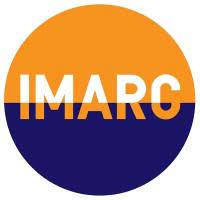
Mines of the Future: From Engineering to Operations with Digital Integration

Rising demand for critical metals is driving operators to adopt digital platforms to build smarter, faster mines, writes Glenn Kerkhoff, Global Industry Principal, Mining, Metals and Minerals, AVEVA.
The mining industry has entered a period of unprecedented demand – a time of significant challenges, but also vast opportunity.
As the world races towards net-zero, advanced technologies like electric vehicles and battery storage are driving soaring demand for critical metals – including lithium, copper, cobalt, and nickel. These systems require far more raw materials than traditional energy infrastructure. We are now seeing companies reliant on these metals expand their supply chains and invest directly in mining, such as Apple’s recent announcement to invest in MP Materials.
For mine operators, this surge in demand might seem like a ‘good problem to have’. But the reality is more complex. Bringing a new mine online can take 15+ years, and existing sites are already struggling to keep pace. At the same time, projects are becoming more remote and technologically complex. From engineering to operations, a global talent shortage is making it harder to scale at the pace the market demands.
The industry is also contending with rising costs – from energy and labour to equipment and transport. Add to that a difficult global supply chain environment and ESG compliance pressures, and the result is growing uncertainty around delivery timelines and long-term capital planning.
In short, the sector is under intense pressure to deliver more critical metals – quickly and sustainably. It’s no small ask.
The Path Forward: Digitally Transforming Mine Development
To build more mines on time – and responsibly – owner-operators and EPCs are turning to full-scale digital engineering platforms.
Powered by cloud-based design tools, AI-driven modelling and real-time collaboration environments, these systems enable companies to streamline and optimise every phase of mine development – from design and build, commissioning and handover to operations.
This full-spectrum visibility offers a practical solution to the sector’s long lead times and often spiralling costs. Here’s how:
Reduced Risk
Digital engineering platforms enhance cost forecasting accuracy, enabling EPCs and owner-operators to run multiple build-out scenarios with varying inputs and constraints. This results in better capital allocation decisions and fewer financial overruns.
According to McKinsey, mining companies that deploy advanced digital technologies and analytics can reduce CAPEX by up to 20% and cut project delivery times by up to 30%.
Reusable Designs
Standardised digital solutions allow mining companies to create reusable design templates that can be replicated across multiple projects. This means engineers don’t have to start from scratch every time, enabling faster project iteration, less rework, lower costs, and more predictable outcomes. This process allows mining operators and EPCs to work together seamlessly – with a smooth handover every time.
Integrated Project Delivery
These platforms connect cross-functional teams – from engineers and suppliers to construction crews – across a shared data environment. When one team updates a design spec, the change flows across the system. This eliminates version conflicts and ensures everyone is working off a single source of truth.
By ensuring that all stakeholders have access to accurate, real-time design models, companies can streamline handovers and maximise asset performance.
But digital delivery is only as strong as the partnership between projects and operations. To unlock lasting value, both must evolve their digital capabilities in tandem.
Projects should deliver a rich, robust digital asset – not just a handover file – containing everything operations will need for decades to come. In turn, operations must be equipped to exploit that asset’s full potential, safeguard its integrity, and invest in its upkeep.
Digital Mining in Action
Global mining firms are already achieving measurable gains through digital-first design and build.
For example, Rio Tinto deployed a suite of digital tools to drive greater efficiency, transparency and control across mine development projects. One of its most significant advancements has been the shift toward design reuse. For the first time, an entire crushing facility, including conveyor systems, was replicated from one project to another – significantly reducing engineering time and capital expenditure.
Another case in point is K+S Potash Canada, which sought to simplify access to design and engineering information to enable global remote collaboration without the need to mobilise office staff.
Its projects often involve eight to nine offices and multiple third-party providers spread across different locations. Data was sourced from various systems and formats, leading to inconsistencies and compatibility issues across engineering, procurement, and construction disciplines.
By implementing a unified data environment, K+S eliminated errors in raw data and unlocked access to over ten times more data points. A single source of truth has reduced miscommunication and rework, making handovers smoother and more consistent across the board.
The ability to update data seamlessly within a collaborative environment also ensures all stakeholders have access to the latest insights in real time – enhancing decision-making and operational agility.
Speed Without Compromise
The critical metals boom is creating unprecedented pressure to move from discovery to production at breakneck speed. In this climate, mining operators that leverage digital tools and integrated data environments will be able to support rapid scale-up without sacrificing quality or compliance.
Unquestionably, the future of mining project delivery lies in close, digitally enabled collaboration between owners, EPCs, OEMs, and regulators. By connecting every phase of a project within a single digital ecosystem, companies can unlock new levels of efficiency, transparency and agility.
This integrated approach shortens the path from groundbreaking to production, cutting the time, cost, and risk of building a new mine.
As the sector faces growing pressures to produce more with less, those who embrace fully integrated digital engineering will lead the next generation of mining companies.
Schneider Electric and AVEVA will be showcasing these digital innovations and their impact on mining operations at the upcoming International Mining and Resources Conference (IMARC) in Sydney. Their joint presence will highlight how integrated platforms are helping operators meet the demands of a rapidly evolving industry.
MORE or "UNCATEGORIZED"
Doubleview Extends High-Grade Domains at Hat: H099 Returns 438m of 0.40% CuEq Including 52m of 1.02% CuEq, Expanding Mineralization Envelope Around Conceptual Pit Vertically and Laterally
Doubleview Gold Corp. (TSX-V: DBG) (OTCQB: DBLVF) (FSE: 1D4) is pleased to announce assay results f... READ MORE
Cosa Closes Upsized C$7.5 Million Private Placement
Cosa Resources Corp. (TSX-V: COSA) (OTCQB: COSAF) (FSE: SSKU) is pleased to announce that it ... READ MORE
Americas Gold and Silver Closes US$132.25 Million Bought Deal Financing
Americas Gold and Silver Corporation (TSX: USA) (NYSE American: USAS) is pleased to report that it h... READ MORE
1911 Gold Closes C$23 Million "Best Efforts" Life Offering & Private Placement and Provides Corporate Updates
1911 Gold Corporation (TSX-V: AUMB) (FRA: 2KY) is pleased to announce that it has completed its prev... READ MORE
Endeavour Silver Completes US$350 Million Offering of Convertible Senior Notes
Endeavour Silver Corp. (NYSE: EXK) (TSX: EDR) announced today the closing of its previously announce... READ MORE












